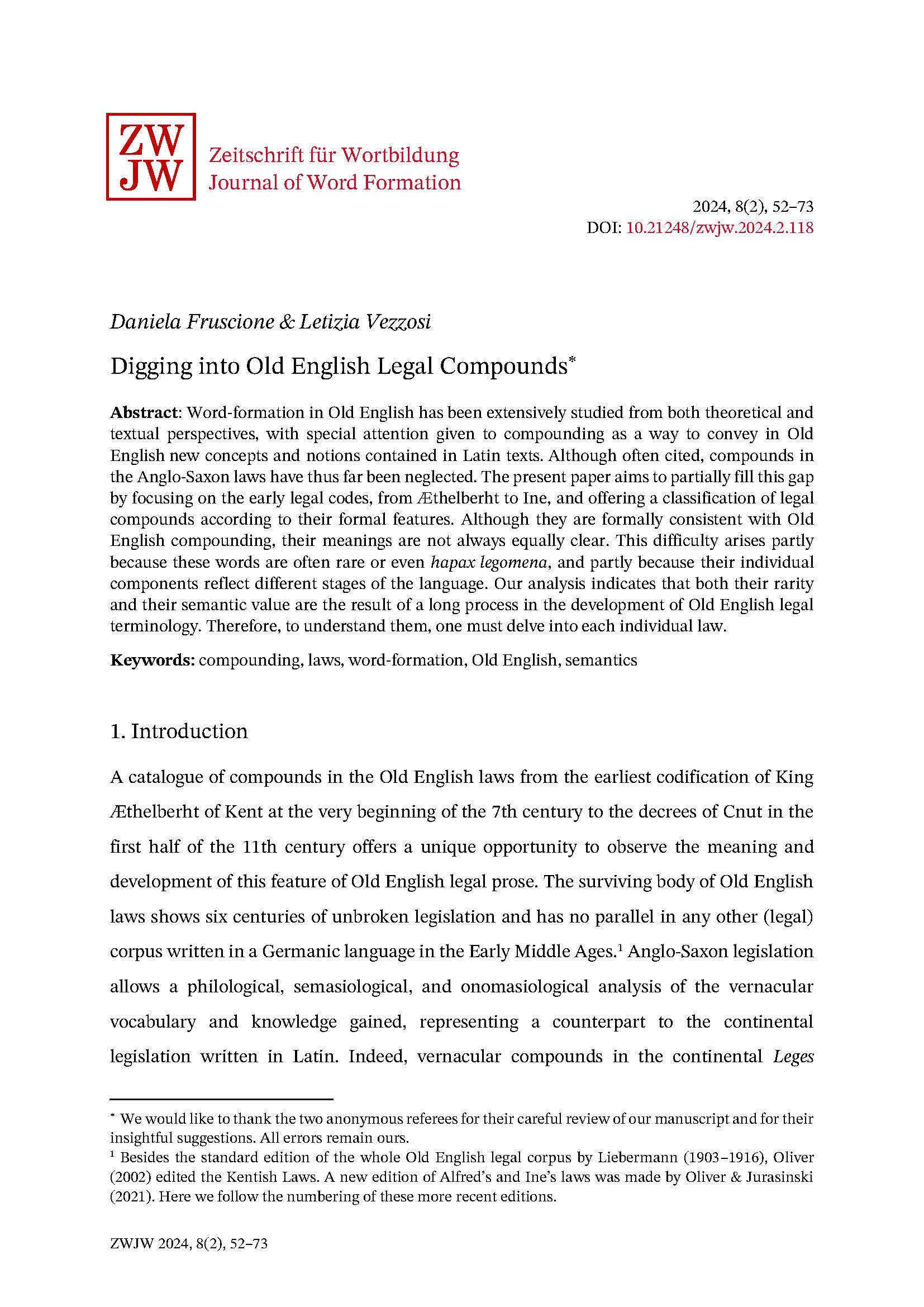Digging into Old English Legal Compounds
DOI:
https://doi.org/10.21248/zwjw.2024.2.118Schlagworte:
compounding, laws, word-formation, Old English, semanticsAbstract
Word-formation in Old English has long been subject to several important studies, both from a theoretical and textual. Special attention has been given to compounding especially as a means to cope with the new concepts and notions present in Latin texts. Although often quoted, compounds in the Anglo-Saxon laws has been so far neglected. The present paper aims to partially fill the gap. Focussing on the early legal codes, from Æthelberht to Ine, we will categorise compounds in laws in a sort of typology and analyse them according their formal features. The difficulty in the determination of the semantic relationship between their constituents lead us to the hypothesis that, due to the close intertwining between law and its society, compounds are a mirror either backwards previous stages of the language (e.g. drihtinbeag ‘fine for slaying a freeman’ where drihtin retains its pre-Christian meaning) or forwards to future changes (e.g. the loss of grammatical gender, as in liblac ‘witchcraft’), but are also the results of a long process to develop a legal terminology. Therefore, to understand them one has to dig into each individual law.




